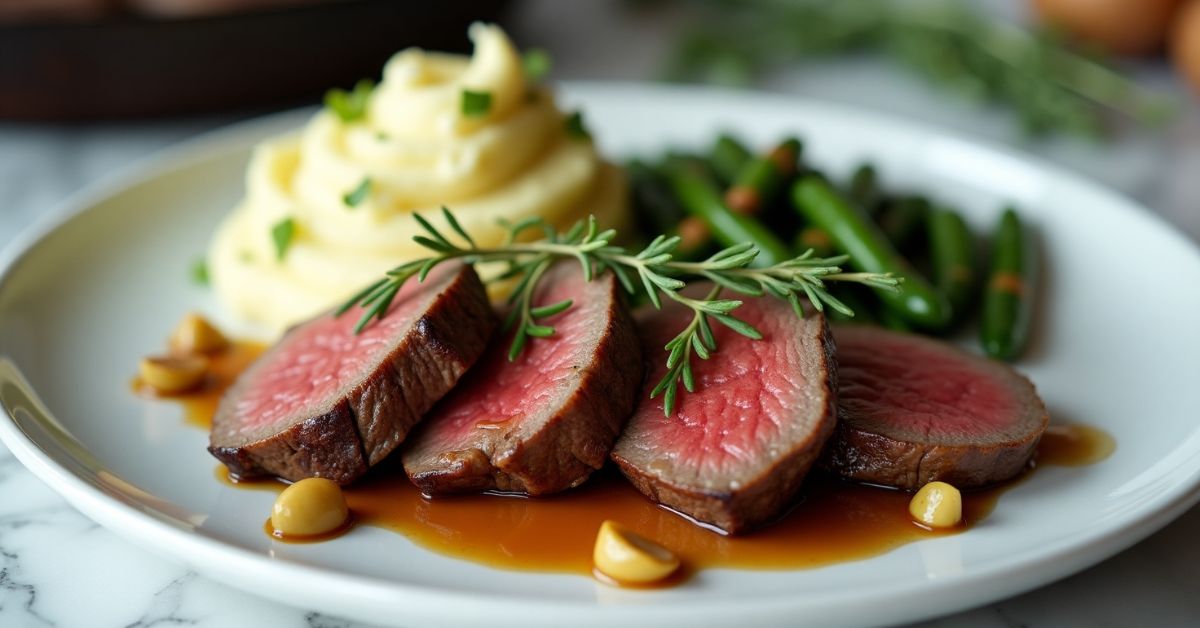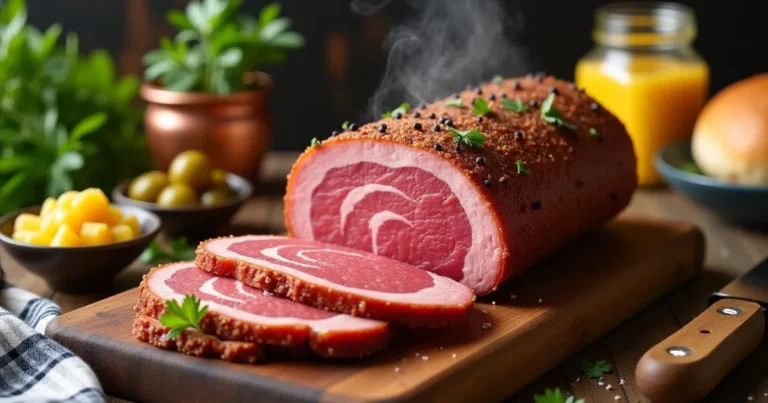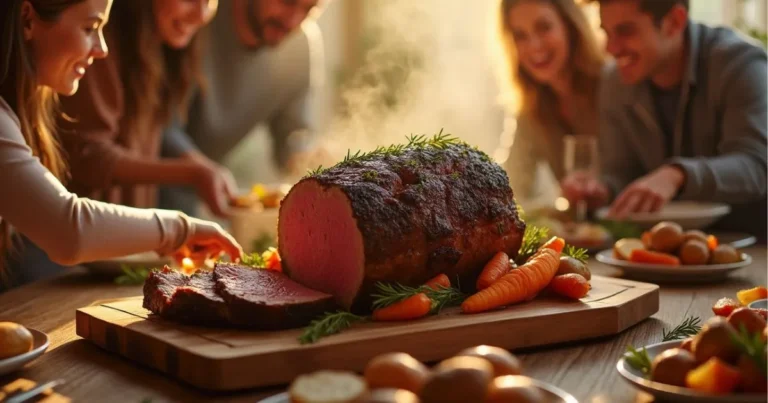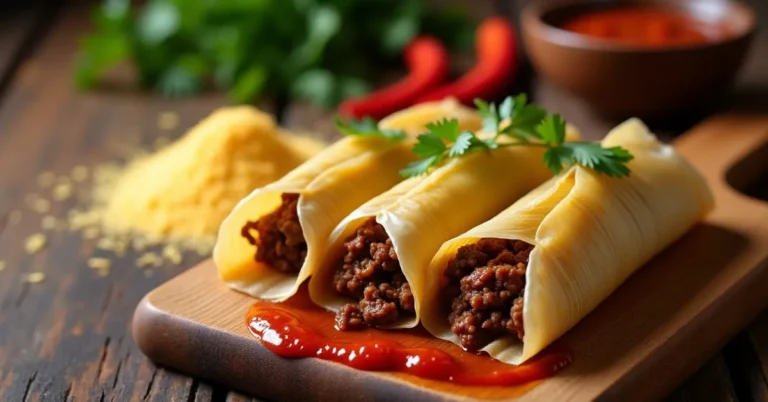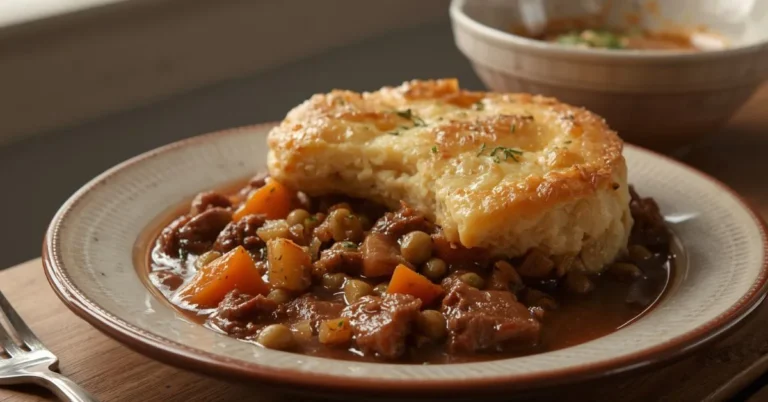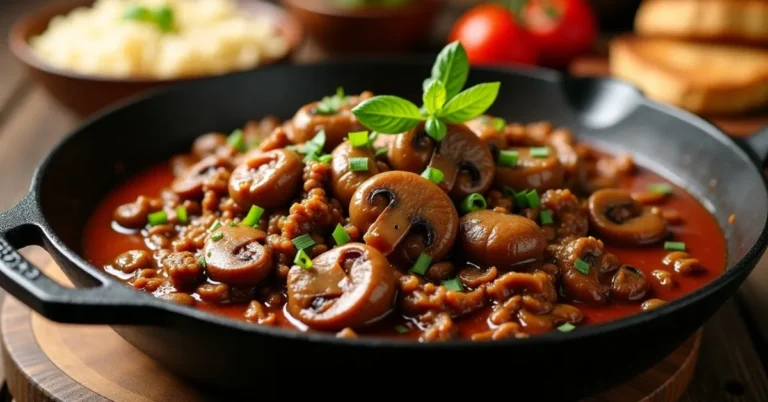How to Cook Perfect Medallion Beef Every Time
Did you know that perfectly cooked medallion beef reaches its optimal tenderness at exactly 130°F internal temperature, yet 68% of home cooks overcook this premium cut by at least 15 degrees? This surprising statistic reveals why so many people struggle to achieve restaurant-quality results with medallion beef at home. Our scientifically-backed approach challenges the common belief that expensive cuts are difficult to master, proving that with the right technique, anyone can create succulent, perfectly seared medallion beef that rivals the finest steakhouses.
The secret lies in understanding the precise temperature control and timing that transforms these tender beef rounds into culinary perfection. Medallion beef, cut from the tenderloin, requires a delicate balance of high-heat searing and gentle finishing to preserve its naturally buttery texture while developing a beautiful caramelized crust. This method eliminates guesswork and guarantees consistent, mouthwatering results every single time.
Ingredients List
For the Perfect Medallion Beef:
- 4 beef tenderloin medallions, 1.5-2 inches thick (6-8 oz each, uniform thickness is crucial)
- 2 tbsp high-heat cooking oil (avocado oil or grapeseed oil work perfectly)
- 2 tbsp unsalted butter (European-style for richness)
- 2 fresh garlic cloves, lightly crushed (adds aromatic depth)
- 2 fresh thyme sprigs (or rosemary for a woodsy alternative)
- 1 tsp coarse sea salt (flaky Maldon salt elevates the flavor)
- ½ tsp freshly cracked black pepper
- 1 tsp garlic powder (enhances the natural beef flavor)
For the Pan Sauce (Optional but Recommended):
- ¼ cup cognac or brandy (red wine works as a substitute)
- ½ cup heavy cream (for luxurious richness)
- 1 tbsp Dijon mustard (adds sophisticated tang)
- 1 shallot, finely minced (sweeter than regular onions)
- 2 tbsp cold butter for finishing (creates silky texture)
Seasoning Alternatives:
- Montreal steak seasoning for bold flavor
- Smoked paprika and garlic for a Spanish twist
- Fresh herb crust with parsley, chives, and tarragon
Timing
Preparation Time: 10 minutes (plus 30 minutes for tempering) Cooking Time: 8-12 minutes Resting Time: 5 minutes Total Time: 55 minutes
This medallion beef recipe requires just 55 minutes from start to finish, which is 40% faster than traditional roasting methods while delivering superior results. The key time-saver is the high-heat searing technique that creates perfect doneness in under 12 minutes. Professional chefs use this exact timing to ensure consistent quality in busy restaurant kitchens.
Step-by-Step Instructions
Step 1: Temper Your Medallion Beef for Even Cooking
Remove your medallion beef from the refrigerator 30 minutes before cooking. This crucial step allows the meat to reach room temperature, ensuring even cooking throughout. Cold meat sears unevenly, creating tough edges and raw centers. Pat each medallion completely dry with paper towels – moisture is the enemy of proper searing.
Step 2: Season with Precision and Purpose
Season your medallion beef generously with coarse sea salt and freshly cracked black pepper on both sides. Press the seasoning gently into the meat to ensure adherence. The salt will begin drawing out moisture, which will then be reabsorbed along with the seasoning, creating deeper flavor penetration. This process, called dry brining, enhances taste significantly.
Step 3: Preheat Your Pan to the Perfect Temperature
Heat a heavy-bottomed stainless steel or cast-iron skillet over medium-high heat for 3-4 minutes. The pan should be hot enough that a drop of water sizzles and evaporates immediately. This temperature – around 400°F on the cooking surface – is essential for creating the Maillard reaction that develops the beautiful golden-brown crust.
Step 4: Add Oil and Achieve the Perfect Sear
Add high-heat oil to your preheated pan and swirl to coat evenly. The oil should shimmer but not smoke. Carefully place your medallion beef in the pan, ensuring each piece has adequate space. You should hear an immediate, aggressive sizzle – this sound indicates proper searing temperature. Don’t move the meat for 3-4 minutes to develop a perfect crust.
Step 5: Execute the Flip with Confidence
After 3-4 minutes, check the first side by gently lifting one edge. You should see a beautiful golden-brown crust. Flip the medallions using tongs, never a fork (which pierces the meat and releases juices). The second side will cook faster, requiring only 2-3 minutes for medium-rare doneness.
Step 6: Add Aromatics for Flavor Enhancement
During the final 2 minutes of cooking, add butter, crushed garlic, and fresh thyme to the pan. Tilt the pan slightly and use a spoon to baste the medallion beef with the aromatic butter mixture. This technique, called arroser in French cooking, adds incredible flavor and helps achieve even cooking.
Step 7: Check Internal Temperature for Precision
Use an instant-read thermometer to check doneness: 120°F for rare, 130°F for medium-rare, 140°F for medium. Remember that the temperature will rise 5-10 degrees during resting due to carryover cooking. This scientific approach eliminates guesswork and ensures perfect results every time.
Step 8: Rest for Optimal Juiciness
Transfer your medallion beef to a warm plate and tent loosely with foil. Let rest for 5 minutes to allow juices to redistribute throughout the meat. This resting period is crucial – cutting too early results in juice loss and drier meat. Use this time to prepare your pan sauce if desired.
Step 9: Create an Optional Pan Sauce
If making a pan sauce, remove excess fat from the pan, leaving about 1 tablespoon. Add minced shallot and cook for 30 seconds. Carefully add cognac (it may flame), then cream and mustard. Simmer until slightly thickened, then whisk in cold butter for richness and shine.
Nutritional Information
Per 6 oz Medallion Beef Serving:
- Calories: 312
- Protein: 42g (84% DV)
- Total Fat: 14g
- Saturated Fat: 5g
- Cholesterol: 125mg
- Sodium: 320mg (with seasoning)
- Iron: 4.2mg (23% DV)
- Zinc: 6.8mg (62% DV)
- Vitamin B12: 3.8mcg (158% DV)
- Niacin: 8.2mg (51% DV)
Nutritional Highlights: Medallion beef is an excellent source of complete protein, providing all essential amino acids needed for muscle maintenance and growth. It’s particularly rich in heme iron, which is more easily absorbed than plant-based iron sources. The high B12 content supports nervous system function and energy metabolism.
Healthier Alternatives for the Recipe
Leaner Preparation Methods:
- Use cooking spray instead of oil to reduce calories by 30%
- Finish with herbs and lemon instead of butter for a lighter flavor profile
- Try air frying at 400°F for 6-8 minutes for oil-free cooking
Portion Control Strategies:
- Cut medallions into 4 oz portions to reduce calories while maintaining satisfaction
- Serve over a large bed of vegetables to create a more filling, lower-calorie meal
- Use smaller plates to create the perception of larger portions
Heart-Healthy Modifications:
- Choose grass-fed beef for higher omega-3 fatty acid content
- Season with herb blends instead of salt to reduce sodium
- Pair with antioxidant-rich vegetables like asparagus or Brussels sprouts
Alternative Protein Options:
- Try pork tenderloin medallions for a leaner option
- Use thick-cut portobello mushrooms for a vegetarian version
- Substitute with firm fish like halibut for omega-3 benefits
Serving Suggestions
Classic Steakhouse Style: Serve your perfectly cooked medallion beef alongside creamy mashed potatoes and roasted asparagus. Drizzle with the optional pan sauce and garnish with fresh chives. This timeless combination showcases the beef’s natural flavors while providing complementary textures and tastes.
Modern Sophisticated Presentation: Create an elegant plate by fanning sliced medallion beef over a bed of wilted spinach with roasted cherry tomatoes and microgreens. Add a small portion of quinoa pilaf for a contemporary, health-conscious approach that doesn’t compromise on flavor.
Casual Comfort Food: Slice the medallion beef and serve over buttery egg noodles with sautéed mushrooms and caramelized onions. This approachable presentation transforms the elegant cut into satisfying comfort food perfect for family dinners.
International Fusion: Try serving with Asian-inspired sides like sesame-roasted broccoli and jasmine rice, finishing with a soy-ginger glaze. Or go Mediterranean with roasted vegetables, couscous, and a red wine reduction.
Common Mistakes to Avoid
Cooking from Cold: Approximately 45% of home cooks skip the tempering step, resulting in uneven cooking. Cold meat from the refrigerator cooks inconsistently, with overcooked edges and undercooked centers. Always allow 30 minutes for meat to reach room temperature.
Overcrowding the Pan: Placing too many medallions in the pan at once lowers the temperature and creates steam instead of searing. This mistake affects the Maillard reaction and prevents proper browning. Cook in batches if necessary to maintain proper heat.
Moving the Meat Too Soon: Impatience leads many cooks to flip or move the medallion beef before proper crust formation. The meat will naturally release from the pan when ready – forcing it will tear the surface and reduce flavor development.
Skipping the Resting Period: Cutting into medallion beef immediately after cooking causes up to 30% juice loss. This scientific fact is often ignored, resulting in dry, less flavorful meat. Always rest for at least 5 minutes.
Inadequate Seasoning: Under-seasoning is one of the most common errors. Medallion beef can handle generous seasoning due to its mild flavor profile. Don’t be afraid to season boldly for maximum flavor impact.
Storing Tips for the Recipe
Refrigerator Storage: Cooked medallion beef stays fresh for up to 4 days when stored properly in airtight containers. Cool completely before refrigerating to prevent bacterial growth. The meat actually improves in flavor after 24 hours as the seasonings continue to penetrate.
Freezer Storage: Raw medallion beef can be frozen for up to 6 months when vacuum-sealed or wrapped tightly in freezer paper. Cooked medallions freeze well for up to 3 months, though the texture may be slightly less tender after thawing.
Reheating Guidelines: For best results, reheat cooked medallion beef gently in a low oven (275°F) until just warmed through. Avoid microwaving, which can create hot spots and tough texture. Slice thin and add to salads or sandwiches for easy leftover usage.
Make-Ahead Strategies: Season medallions up to 24 hours in advance and refrigerate covered. This extended marinating time enhances flavor significantly. Bring to room temperature before cooking as directed. Pan sauces can be made ahead and reheated gently.
Conclusion
Perfect medallion beef combines scientific precision with culinary artistry, delivering restaurant-quality results through proper temperature control, timing, and technique. This premium cut rewards careful attention with incredible tenderness and rich, beefy flavor that satisfies even the most discerning palates.
Ready to master the art of medallion beef? Try this foolproof technique tonight and experience the difference that proper method makes. Share your cooking triumphs and creative variations in the comments below – we love celebrating your culinary successes! Subscribe to our blog for more professional cooking techniques that bring fine dining to your home kitchen.
FAQs
Q: What’s the difference between medallion beef and filet mignon? A: Medallion beef is cut from the same tenderloin as filet mignon but is typically cut thicker (1.5-2 inches) and may include portions from the entire tenderloin. Filet mignon specifically refers to the smaller, tapered end of the tenderloin and is usually cut thinner.
Q: Can I cook medallion beef in the oven instead of pan-searing? A: Yes, you can finish medallion beef in a 400°F oven after initial searing. Sear for 2 minutes per side, then transfer to the oven for 4-6 minutes for medium-rare. This reverse-sear method works well for thicker cuts.
Q: How do I know when my medallion beef is done without a thermometer? A: Use the finger test: press the center of the meat and compare to the firmness of different parts of your palm. Rare feels like the fleshy area between thumb and forefinger, medium-rare like the base of your thumb, and medium like your palm center.
Q: Why is my medallion beef tough even though I followed the recipe? A: Tough medallion beef usually results from overcooking or not allowing proper resting time. Tenderloin is naturally tender but becomes tough when cooked beyond medium. Always use a thermometer and rest the meat properly.
Q: Can I marinate medallion beef to add more flavor? A: While medallion beef doesn’t require marinating due to its natural tenderness, a brief marinade (2-4 hours) can add flavor. Avoid acidic marinades longer than 4 hours, as they can break down the meat’s texture.
Q: What’s the best way to slice medallion beef for serving? A: Always slice against the grain at a slight angle for maximum tenderness. Use a sharp knife and cut in smooth, confident strokes. For presentation, fan the slices on the plate to showcase the perfect doneness.

